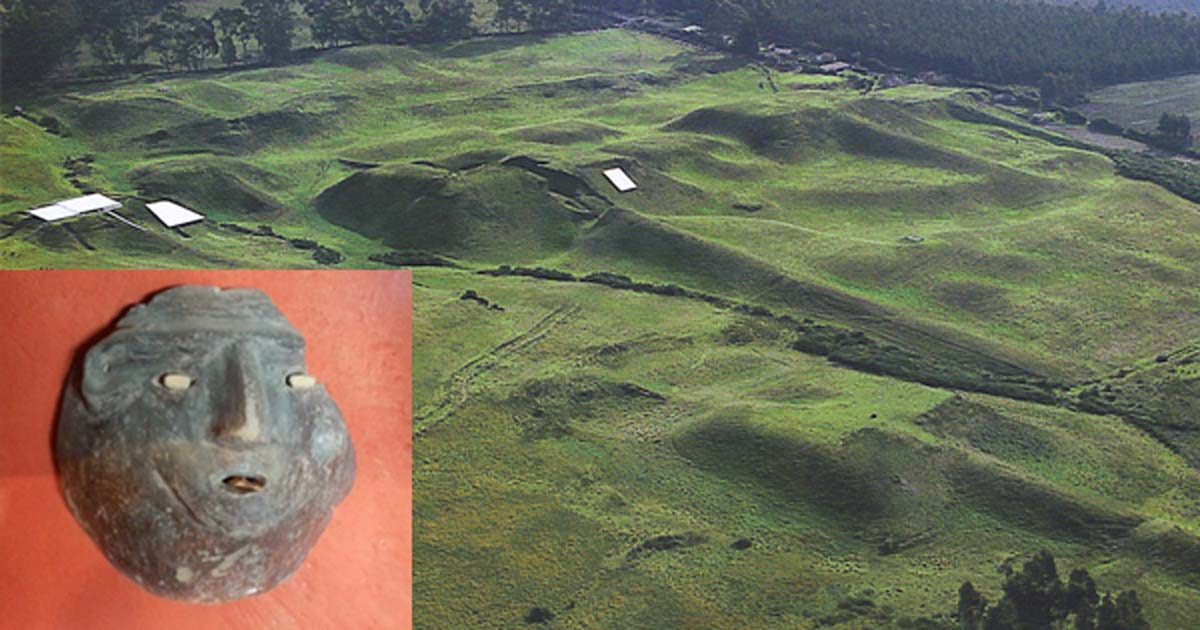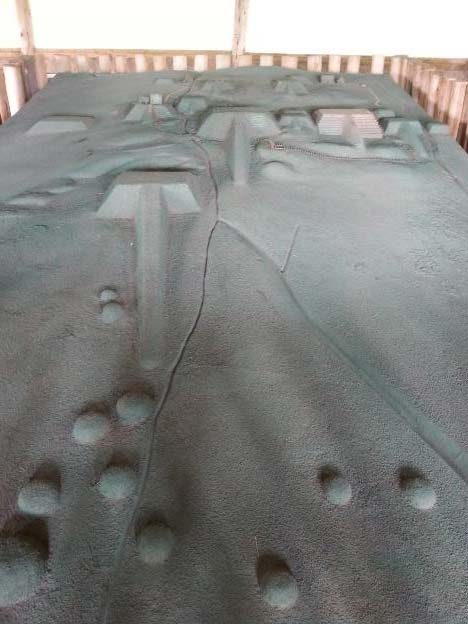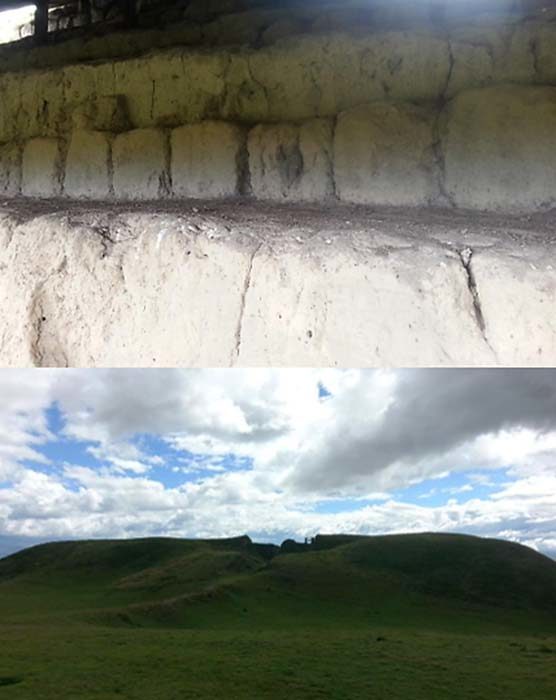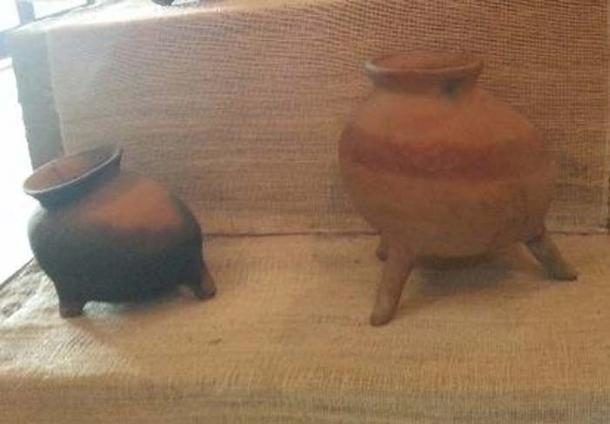
Architecture and Archaeology of the Site
There are 15 flat-topped pyramids constructed at Cochasquí. Nine of them have ramps. 21 large, circular funerary mounds have also been noted. This is not a small site!

Most of the pyramids are left overgrown to protect the environmentally sensitive cangagua blocks. However, the largest pyramid, pyramid 9, has a wide gap in the middle where previous landowners of the site sent a channel of water through in search of treasure.
The Cochasquí archaeological site is 3100 meters (10170 ft.) above sea level and extremely close to the equator. It has an unrivalled view of 280 degrees, including views of a combination of snow capped mountains and volcanoes. Archaeological investigations have taken place on and off since 1932. The most well-known archaeologist to study the site was the German Max Uhle.
The ceramic artifacts found at Cochasquí have enabled archaeologists to split the occupation of the site into two periods. Cochasquí I ran from 950-1250 AD and the zapato (shoe) style of thicker ceramic was popular. In Cochasquí II, from 1250-1550 AD, people had elaborated on their ceramic designs, included paint, handles, and were making thinner and finer ceramics. The popular style of this time period was the tripod, which some say is a reflection on the family - with one leg as a symbol of the mother, another as the father, and the third as their child.
Read the remainder of the article here.
Alicia McDermott has degrees in Anthropology, International Development Studies, and Psychology. She is a Canadian who resides in Ecuador. Traveling throughout Bolivia and Peru, as well as all-over Ecuador, Alicia has increased her knowledge of Pre-Colombian sites as well as learning more about modern Andean cultures and fine-tuning her Spanish skills. She has worked in various fields such as education, tourism, and anthropology.





Reader Comments
So, they cut water soften rocks with harder rocks in the pre iron age era. Did they not have any bronze tools lying around? I tried to cut some limestone with a basalt rock, did not work well. I guess this is just like the Egyptians building the pyramids with copper tools.
" Blablabla, there was an iron age, blablabla, we came from apes, blablabla, National Socialism is very evil, blablabla, men are evil, blablabla, women are superior, etc etc..."
If someone had the common sense to ask the RESIDENTS and indigenous peoples of these lands (ie, not listen to the know-it-all scientists and learned ignoramuses of our superior modern age of horrendous bombs and guns), they would easily tell you that these artefacts were not shaped by iron tools BUT BY PLANTS. It is well known in the Amazonian cultures that a plant formula can be applied to hard rocks to temporarily transform them into soft pliable clay-like material, making them easy to shape and carve... and once the shaping has been done, the rock goes hard, and the end result is an incredible piece of work that looks as if its been crafted by hand (sometimes a bit shoddy), or slabs of rock that fit together so well, it is as if the rocks had been turned into putty to make it happen (like in Cuzco, Peru).